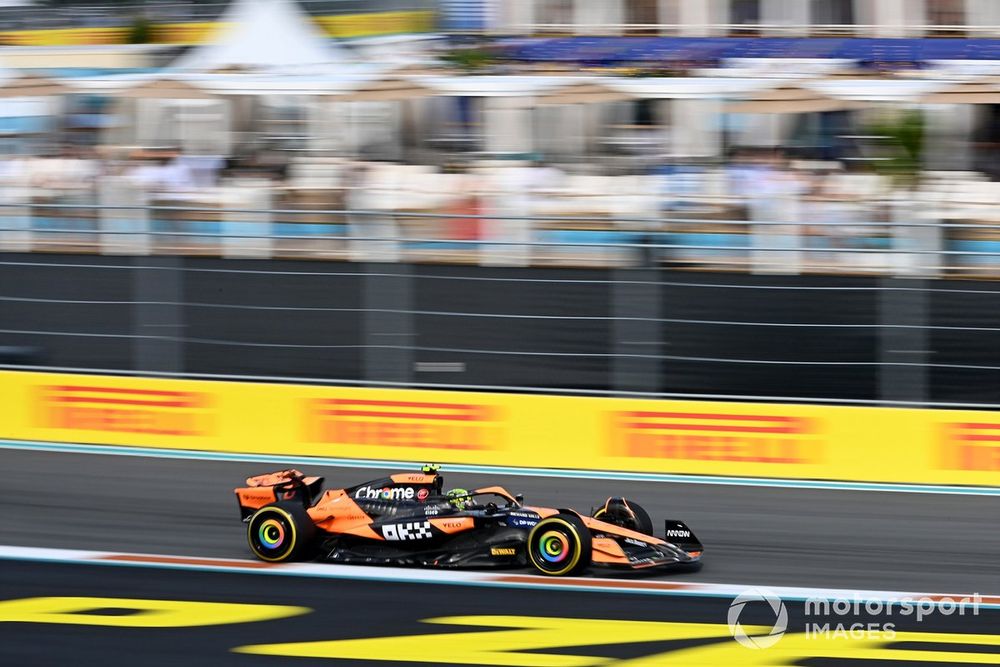As the official submission to the FIA about its developments revealed, almost no aerodynamic surface had been left untouched with the full package of changes that had been fitted to Lando Norris’s car.
While the Woking-based squad had teased beforehand about the revisions being part of efforts to address a weakness in low speed, the true motive of these latest developments was obvious: pure downforce.
In F1, though, not all downforce is the same – and the key to real success is in delivering it in as efficient a manner as possible.
Depending on which way you look at it, efficiency is about too much drag, or too little downforce, for a set wing level.
It is quite easy to bring a barn door rear wing that produces a ton of ‘dirty’ downforce to help you be quick around the corners, but that is no good as soon as a car starts stretching its legs on the straights.
What is critical to understand about McLaren’s Miami upgrades is that it brought a double whammy of gains: more clean downforce to be quicker around the corners, which opened the door to letting it run less wing (so more speed on the straights). It was very much a case of having its cake and eating it.
As McLaren team boss Andrea Stella explained, the focus of its effort was on bringing efficient downforce that did not add drag – which then allowed it to trim things off elsewhere.
So after a recent history of it being slightly on the back foot on the straights, it did not go unnoticed that it was more competitive against its rivals now.
Photo by: Mark Sutton / Motorsport Images
“We had good top speed here,” explained Stella. “One of the reasons is that we on purpose decided to go for a relatively light rear wing.
“We could do that because we added downforce through the package, and this means that we needed to be less demanding from a rear wing point of view, which is never too efficient.
“When you upgrade a car with floors and sidepods, it’s always more efficient than putting downforce on with a rear wing.”
The overall benefits of the package were also complemented by it going a slightly different way to what would be expected on set-up.
So rather than capitalising on the advantage it has over rivals in high-speed corners, it shifted its focus to be better optimised for the slower sections.
As Stella explained: “We consciously decided to set up the car to maximise low-speed performance.
“The decent performance we had in low-speed is…
Click Here to Read the Full Original Article at Motorsport.com – Formula 1 – Stories…

